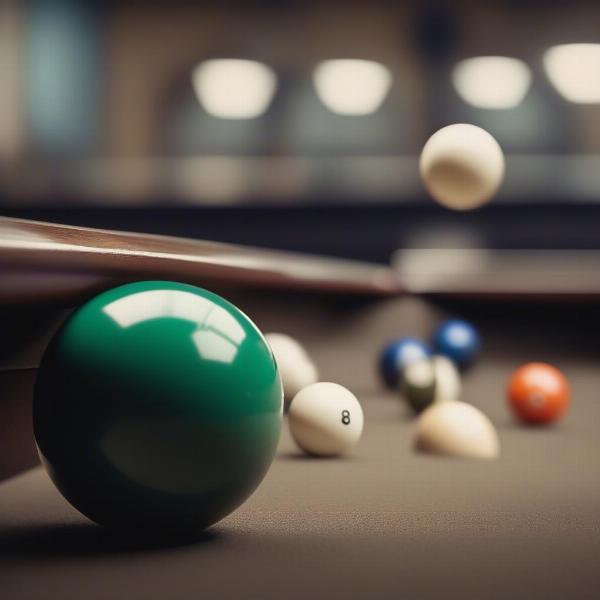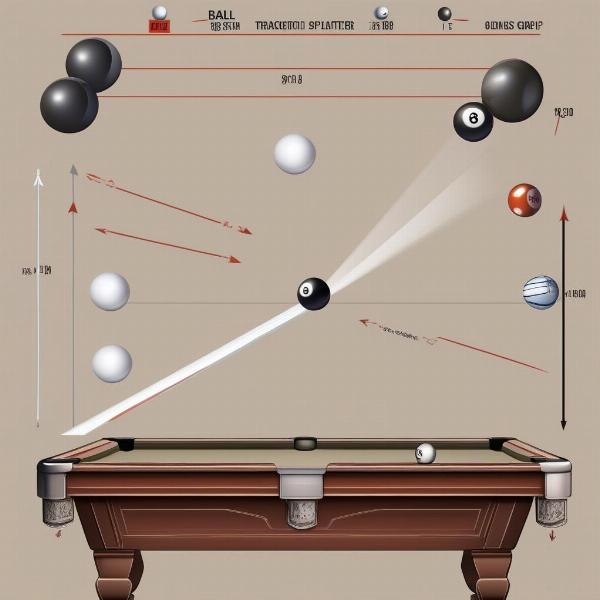The quest for the perfect opening shot in 8 Ball Pool is a common pursuit, and on platforms like Game Pigeon, this desire is no different. At SupremeDuelist.blog, we understand the intricacies of these digital battles. Our goal is to provide you with the tools and insights needed to dominate your opponents, starting with that all-important break. This guide dives deep into the strategies, techniques, and nuances of the best 8 ball break game pigeon, ensuring you’re always one step ahead.
This article will explore the key components of a successful break, from the physics involved to the practical application on the Game Pigeon platform. We’ll delve into the various break strategies, analyze their pros and cons, and offer actionable advice that you can immediately implement to improve your game. Whether you’re a casual player or a seasoned pro, our insights will help elevate your 8 Ball Pool performance.
Understanding the Fundamentals of a Good Break
A successful break in 8 Ball Pool isn’t just about hitting the cue ball hard; it’s about calculated power and precise angles. The primary goal is to scatter the balls effectively, ideally pocketing at least one ball, and establishing a favorable table layout for the rest of the game. It’s important to understand that the mechanics within Game Pigeon closely mirror a real pool table’s physics, albeit with slight variations due to the digital environment. The speed, spin, and direction of the cue ball all play vital roles in the outcome of your break shot. It’s about creating chaos but a controlled chaos.
Power Control: More Than Just Hitting Hard
Many players mistakenly believe that maximum power is always the best approach. However, a controlled break is often more effective. The ideal power level is just enough to scatter the balls effectively without sending the cue ball flying off the table or scratching. Finding the sweet spot takes practice, but it involves understanding the sensitivity of the game’s physics engine. Consider the table layout as well, some patterns of balls tend to break better than others.
 Power Control in Game Pigeon 8 Ball Break
Power Control in Game Pigeon 8 Ball Break
Angle of Attack: Precision is Key
The angle at which you strike the cue ball is crucial for generating the desired ball scatter. A straight-on hit can sometimes result in a tight cluster of balls and leave you with little advantage. Aiming slightly off-center, or using a touch of side-spin, can help spread the balls more efficiently. Practice and experimentation are needed to find the best angles for your break style, and the sensitivity of the Game Pigeon interface.
The Importance of the Lead Ball
The lead ball, or the one at the head of the triangle, is the primary target during the break. This ball should receive the maximum impact from the cue ball. A good hit here usually sends it and its neighboring balls careening toward the sides and corners of the table. A poorly struck lead ball can lead to a clustered mess, and a more difficult table to play.
Common Break Strategies in Game Pigeon
There are several break strategies that players often use in 8 Ball Pool, each with their advantages and disadvantages. Experimenting with these different approaches will help you find the best break for your style, and help you adapt to different table layouts.
The Full Power Straight Break
This is the most common and perhaps the simplest break strategy. You aim straight for the lead ball using maximum power. While this can often result in a scatter, it can also be unpredictable, and lead to a scratch or give your opponent a perfect table. For many, the allure of the perfect break with this method is too tempting.
The Side Angle Break
The side angle break involves hitting the cue ball slightly off-center, aiming toward the side of the lead ball. This technique can help spread the balls more evenly across the table and make it easier to get a ball in. This is more advanced technique, but the benefit is often worth the practice. It allows for more controlled breaks, and a better table layout overall.
“Understanding the nuances of spin is critical for a successful side angle break,” explains Dr. Emily Carter, a leading game physics expert. “It’s not just about power, it’s about control and precision.”
The Soft Break
This strategy uses less power and focuses more on precision. The goal isn’t to scatter the balls as widely as possible, but rather to create favorable pocketing opportunities. This break is useful when you want to maintain more control of the table. It’s ideal when you’re playing more strategically. It does risk leaving many balls clustered, or giving your opponent the advantage.
The 8-Ball Break Strategy
While not always effective, sometimes aiming for the 8 ball to pocket on the break is a valid strategy. This may seem like a reckless approach, but it can sometimes work if luck is on your side, and is worth knowing for the unexpected. There are no guarantees that it will work, and in fact it might be a waste of a turn. If you do pocket the eight, however, you automatically win the game.
Advanced Break Techniques
Once you’ve mastered the basics, you can start experimenting with more advanced techniques to further improve your break.
Utilizing Spin
Adding spin to your break shot can dramatically alter how the balls scatter. Backspin, sidespin, and forward spin can each create unique trajectories and impacts. Learning to control the spin is a game-changer, and is essential for anyone looking to master the best 8 ball break game pigeon. While it takes practice, it can lead to significantly better results.
Reading the Table
Before you break, take a look at the arrangement of the balls. Some layouts tend to break better than others. Being able to recognize these patterns can help you decide which break strategy will work best. It’s about pattern recognition, and understanding the subtle shifts in the game. This is not something many players consider, and it could be a key advantage.
Adjusting for Different Tables
Not all tables are created equal; some may have different layouts or slightly altered physics. Adapting your break to these differences is key to consistent success. Always assess the table layout before you break to get the best results. If the break seems off, adjusting to the new settings can be a huge boost for your skills.
“Consistency is the cornerstone of success in any game,” remarks Michael Rodriguez, a competitive 8 Ball Pool player. “Practicing your break, and adapting to various tables, will improve your chances at winning.”
 Spin Control in Game Pigeon 8 Ball Break
Spin Control in Game Pigeon 8 Ball Break
Tips for Consistently Great Breaks
Achieving consistent breaks requires practice and attention to detail. Here are some tips to help you improve your break game:
- Practice Regularly: The more you practice, the better you’ll become at judging power, angles, and spin. Repetition builds consistency.
- Experiment: Try different break strategies and see what works best for you. It’s important to find what works best for you specifically.
- Watch Professional Players: Observe how experienced players execute their breaks. Many resources are available online, including videos.
- Analyze Your Results: After each break, assess what you did well and what you could have done better. Learning from your mistakes is important.
- Stay Calm: Avoid getting frustrated, keep a level head, and focus on your technique. Mental toughness is just as important as skill.
Frequently Asked Questions About Breaks in 8 Ball Pool Game Pigeon
What is the best break technique for Game Pigeon 8 Ball Pool?
The best technique involves a combination of controlled power, precise aiming, and understanding spin. There is no one-size-fits-all solution; it’s about understanding the different options and finding the one that works best for you.
Should I always aim for the lead ball?
Yes, the lead ball should be your primary target when breaking. This usually results in the most effective scattering of the balls. A good hit on the lead ball often leads to great positioning for the next shot.
How much power should I use on my break?
The ideal power is just enough to scatter the balls effectively without scratching. It’s better to start with a controlled break and adjust from there to find your optimal power.
What does spin do?
Spin impacts how the cue ball reacts after hitting the object balls, and can drastically alter the trajectories of all the balls on the table. It adds another level of complexity, and can be a huge help in improving the break.
Is there a secret trick to guarantee a successful break?
While there is no guaranteed trick, a combination of understanding the basics, and practicing different strategies can lead to more consistent breaks. The more you understand the nuances of the physics, the better your breaks will become.
Conclusion
Mastering the break is crucial for success in 8 Ball Pool, and particularly on platforms like Game Pigeon. While the physics might be slightly different from real-life pool, the underlying strategies are the same. By understanding the fundamentals, experimenting with different techniques, and practicing regularly, you can significantly improve your break and your overall game. Remember to leverage all resources available, and always look for new ways to improve. For more in-depth analysis and strategies, keep checking SupremeDuelist.blog, your ultimate resource for all things gaming. So get out there, practice these techniques, and dominate your next match with the best 8 ball break game pigeon.
Leave a Reply